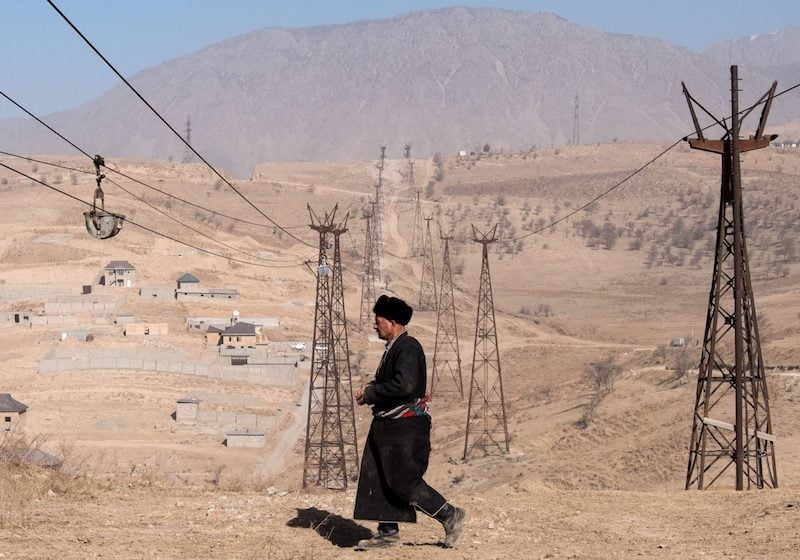5 films that showcase the real Kazakhstan
With his latest movie, Borat: Subsequent Moviefilm, comedian Sacha Baron Cohen has once more unleashed his infamous Kazakh caricature into the world. Even diehard fans, however, will not be surprised to learn that Kazakhstan in real life is somewhat different to its on-screen counterpart (not least because Borat was filmed in Romania.) If you want to discover the real Central Asian country for yourself, then tuck into Kazakhstan’s best contemporary films — as well as one retro pick — to watch online.
Welcome to the USA (2019)
Writer and Director: Assel Aushakimova
Named Best International Feature at New York’s NewFest LGBTQ Film Festival, Welcome to the USA is a quiet but discerning portrait of queer life, belonging, and brain drain in Kazakhstan. The film follows 36-year-old Aliya, who has just won the US Diversity Visa lottery, as she gets her affairs into order and prepares to immigrate. Meanwhile, the people and places in her life complicate her feelings about abandoning her home. Career stagnation and the ebbing economy push her away, while her unhappily-married younger sister and on-again-off-again girlfriend pull her back.
Aushakimova’s clever storytelling turns mundanities, like taking out the trash or returning a shopping cart to its corral, into astute observations on the nature of feeling foreign in one’s own country. The film is a grounded, intimate window into the reality of a post-Soviet nation that is experiencing a yearly outflow of citizens ten times greater than its natural population growth. In the end, Welcome to the USA leaves us questioning what will happen to both Aliya and the country that she struggles to leave behind.
Where to watch: Now screening virtually through November 11 at the MIX Copenhagen Film Festival.
Districts (2016)
Director: Akan Satayev
One of the most popular Kazakhstani feature films of recent years, Districts is the story of 16-year-old Arsen, a newcomer to Alma-Ata (present-day Almaty), the then-capital of the Kazakh Soviet Socialist Republic. The year is 1987, and the waves of organised crime that will define the 90s in the newly-independent Soviet states are just taking shape. In his quest to define himself as a young man navigating the rocky years of glasnost, Arsen is quickly sucked into the underground world of his classmates — violent territorial disputes, petty theft, and plenty of diskotekas.
Satayev’s riveting tale of survival hooks you in a way that only a coming-of-age movie can. While Arsen has his first tastes of sex, drugs, and Soviet rock-and-roll, the viewer is equally enthralled by the beauty of Alma-Ata (Kazakh for “grandfather apple”), a city on the edge of the Alatau mountain range whose present-day locals can at times can be reluctant to call by its new name. It comes as no surprise, then, that the film was awarded Best Cinematography at the 2017 Asian Film Festival in Barcelona. If you’re feeling nostalgic for the rag-tag final days of the USSR (or its aesthetic, at least), then Districts will certainly satisfy.
Where to watch: Streaming for free on YouTube
Let There Be a Girl (2021-22)
Director: Katya Suvorova
The much-anticipated fourth feature-length effort from one of Kazakhstan’s leading documentarians, Katya Suvorova, explores an insidious, centuries-old Kazakh tradition: naming daughters to increase the likelihood of having a much more highly-valued son. Ulzhan (boy soul), Ulbala (boy child), Ultuar (birth of a boy), and Ulbolsyn (let there be a boy), among many other similarly-prefixed variants, are all commonplace names for Kazakh women whose parents were less than thrilled by their gender. As in many cultures around the globe, male children are prized in Kazakhstan for reasons rooted in nomadic tradition, as well as perceived socioeconomic benefits.
The film follows several Kazakh women, all named in the boy-bringing tradition, through their daily lives. Filmed across the vast country in cities with varying cultural milieus, we watch as one heroine makes the brave decision to legally change her name, while another recounts the story of her kidnapping and subsequent forced marriage. We see them grapple with their own existence — were they born to be mere obstacles to their parents or individuals with their own power and purpose? The project has received ample attention from Kazakhstani media, accompanied by predictable backlash from anti-feminist groups. While the film is a perceptive examination of the status of women in modern-day Kazakhstan, it is just as much a conversation on agency and the extent to which we control our own destinies.
Where to watch: Keep an eye on Tihiy Svet’s Instagram page for updates. (Katya Suvorova and her production team are actively seeking production and distribution partners.)
The Crying Steppe (2020)
Director: Marina Kunarova
Seasoned Kazakhstani director and producer Marina Kunarova brings to life this feature film four years in the making — a sober imagining of the often-overlooked Kazakh Famine of 1932-33, considered by some historians to have been a genocide engineered by the Soviet Union against the indigenous population of Kazakhstan’s vast steppe. The famine nearly demolished the Kazakhs — experts cite loss of life as high as 2 million people — and permanently destroyed their nomadic way of life. The Crying Steppe brings this tragedy to the big screen for the first time through the eyes of Turar, a Kazakh eagle hunter, and his wife, Nuriya, a fiercely protective mother to their three children.
The film is a violent portrayal of the on-the-ground mechanisms of the famine, as well as the shameful measures to which human beings can be driven by desperation. Kunarova expertly explores themes of loyalty, betrayal, and remorse while putting the Kazakhstani steppe on full display with breathtaking cinematography by industry veteran Alexander Rubanov. The Crying Steppe is a must-watch for Soviet history buffs and anyone interested in delving into the contemporary Kazakhstani identity.
Where to watch: Screening virtually November 6-9 at the Asian World Film Festival
The Needle (1988)
Director: Rashid Nugmanov
Perhaps the film that most cemented Kazakhstan’s image as a Soviet badlands, The Needle is a classic of communist bloc cinema and is celebrated as the advent of the Kazakh New Wave. Starring the quintessential bad boy of the USSR, Kino frontman Viktor Tsoi, the film follows our hero, Moro, as he makes his way to Alma-Ata to take care of some unfinished business. There, he meets up with an old flame, Marina, who he discovers has fallen victim to the very intravenous drug addiction that would later boil over into an epidemic across the post-Soviet republics.
Moro’s attempts to save Marina from her disease take them across Kazakhstan to the Aral Sea, already a shipwrecked desert by 1988 after decades of ill-contrived Soviet irrigation policies. After his attempts to reckon with the drug dealers whom he blames for Marina’s demise, Moro’s story ends with a cliff-hanger as we watch a bleeding Tsoi limp forebodingly into the night. A planned sequel never came to fruition after the tragic death of the rockstar-turned-actor in 1990. Ultimately, The Needle is a symbol of lost youth and the USSR of perestroika that was never to be.
Where to watch: Streaming for free on Youtube


